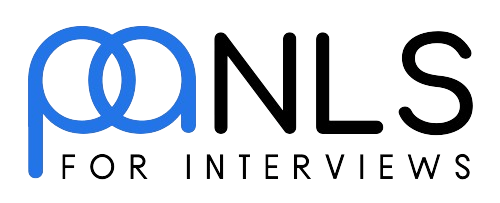Internal Source of Recruitment: A Complete Guide to Benefits, Strategies, and Scaling with Interview as a Service

Looking to cut recruitment costs, improve employee satisfaction, and hire faster without compromising quality? The internal source of recruitment is your solution.
As organizations face increasing pressure to fill roles quickly while maintaining culture and performance standards, many are turning inward to find the right talent. The internal source of recruitment involves hiring from within the existing workforce, a strategy that not only saves time and money but also helps retain top performers.
In this guide, we will explore everything you need to know about the internal source of recruitment—from its definition and benefits to common practices, challenges, and how to scale it efficiently using Interview as a Service (IAAS). With the rise of digital hiring tools like Panls.ai, internal hiring is no longer a manual or biased process. Let’s begin with the basics.
What is an Internal Source of Recruitment?
An internal source of recruitment refers to the process of filling job vacancies from within the existing pool of employees in an organization. Instead of reaching out to external candidates through job boards, recruitment agencies, or LinkedIn ads, companies opt to identify talent already present in their workforce.
This approach contrasts with external recruitment, which involves attracting candidates from outside the company. While both methods have their merits, internal recruitment offers several strategic advantages in today’s talent-constrained market.
Key differences between internal and external recruitment:
- Speed: Internal hiring is typically faster due to shorter interview processes and minimal onboarding time.
- Cost: External recruitment incurs advertising, agency, and onboarding costs, while internal hiring largely avoids these.
- Risk: Internal candidates already understand the company’s culture and expectations, making them less risky hires.
- Innovation: External candidates may bring new ideas and perspectives, which may be limited when hiring internally.
A balanced recruitment strategy should involve both methods, but the internal source of recruitment is increasingly valuable in reducing attrition and enhancing organizational stability.
Common Types of Internal Sources of Recruitment
Organizations can leverage multiple internal recruitment methods based on their goals, team structure, and workforce readiness. Here are the most common types:
1. Promotion
Promoting existing employees to higher positions is one of the most recognized forms of internal recruitment. It rewards performance, builds loyalty, and helps retain high-potential talent.
2. Transfer
Lateral movement across departments or locations helps employees gain diverse experience and allows managers to balance team capabilities. Transfers can be voluntary or initiated by HR based on business needs.
3. Internal Job Postings
Posting job openings internally before announcing them to the public ensures that current employees get the first opportunity to apply. This creates a transparent culture and encourages internal mobility.
4. Employee Referrals
Encouraging employees to refer suitable candidates within the organization for open roles can speed up the hiring process. It also often results in higher retention due to pre-existing trust and cultural alignment.
5. Boomerang Employees
These are employees who return to the company after working elsewhere. They come with fresh insights while already understanding the organization’s systems and values.
6. Succession Planning
Organizations identify and prepare employees to fill key leadership positions in the future. This long-term strategy reduces disruptions during transitions.
7. Internal Talent Pools
Some companies maintain a list of high-potential employees who are trained and ready to take on more responsibilities when opportunities arise.
8. Job Rotation and Temporary Assignments
Allowing employees to take on temporary roles or rotate across departments helps develop new skills and increases overall job satisfaction.
9. Retired Employees as Consultants
Re-engaging retired employees on a part-time or advisory basis helps retain institutional knowledge and bridge skill gaps during transitions.
All these strategies support a robust internal recruitment ecosystem and strengthen long-term talent development.
Key Benefits of Internal Recruitment
The internal source of recruitment offers several tangible and intangible benefits that contribute directly to organizational success.
1. Lower Recruitment Costs
Hiring externally can be expensive due to job advertisements, third-party recruiters, and onboarding efforts. Internal recruitment significantly reduces these costs.
2. Faster Hiring Cycle
Internal candidates are already familiar with company systems and processes, which accelerates the selection and training phases.
3. Higher Employee Morale
Employees appreciate companies that invest in their growth. Promotions and new opportunities increase motivation and engagement.
4. Improved Retention Rates
When employees see opportunities for growth within the company, they are more likely to stay, reducing overall turnover.
5. Better Cultural Fit
Internal hires already align with the organization’s values, reducing onboarding friction and cultural adjustment issues.
6. Knowledge Continuity
Hiring from within ensures that critical institutional knowledge stays within the organization, maintaining workflow consistency.
7. Improved Employer Branding
When companies are known for developing their own people, they attract ambitious candidates looking for long-term growth.
These benefits make the internal source of recruitment not just a tactical decision, but a strategic one for long-term success.
Challenges in Relying Solely on Internal Recruitment
While the internal source of recruitment is powerful, relying on it exclusively has its own limitations. Here are some common challenges and how to address them:
1. Limited Talent Pool
Depending only on current employees may limit diversity and innovation.
Solution: Use internal hiring as a primary strategy but maintain external pipelines for specialized or creative roles.
2. Bias and Favoritism
Perceptions of unfairness can arise if promotions seem politically motivated.
Solution: Implement objective assessments and use third-party tools like Panls.ai to reduce bias.
3. Role Misalignment
An internal candidate may not be the right fit for the new position, even if they excel in their current role.
Solution: Include competency-based evaluations and trial projects before finalizing the move.
4. Overburdening Existing Teams
Shifting an employee internally may leave a critical gap in their current role.
Solution: Plan backfills and stagger transitions to avoid workflow disruptions.
5. Stagnation and Groupthink
Too much internal hiring may lead to a lack of fresh ideas and perspectives.
Solution: Maintain a mix of internal and external hiring to ensure innovation and external benchmarking.
Internal recruitment is most effective when it’s structured, supported by technology, and balanced with new talent from outside the organization.
Scaling Internal Hiring with Interview as a Service
Scaling internal hiring comes with challenges like inconsistent evaluation, manager bandwidth limitations, and potential bias. That’s where Interview as a Service (IAAS) becomes crucial.
What is IAAS?
Interview as a Service involves outsourcing interview processes to expert panels who can assess candidates objectively based on role-specific criteria.
How IAAS Supports Internal Hiring:
- Ensures unbiased hiring for internal applicants.
- Saves time for hiring managers by offloading interviews to trained experts.
- Brings consistency across interviews through structured formats and scoring.
- Offers instant access to industry-specific interviewers.
- Provides rich insights through automated reports and feedback loops.
Using IAAS allows companies to scale the internal source of recruitment without sacrificing quality or fairness.
Why Panls.ai is the Ideal Partner for Internal Recruitment Scaling
Panls.ai is a leading Interview as a Service platform designed to support modern hiring processes—including internal recruitment. It simplifies, standardizes, and scales internal interviews with unmatched efficiency.
Panls.ai features that empower internal hiring:
- Rapidly match your job descriptions to expert interviewers.
- Ensure fairness in promotion and transfer assessments.
- Avoid bias with anonymized candidate evaluations.
- Reduce manager workload through automated scheduling.
- Gain access to in-depth, actionable interview feedback.
Whether you’re managing succession plans, lateral moves, or department transfers, Panls.ai helps scale your internal source of recruitment without delays or inconsistencies.
Final Thoughts
The internal source of recruitment is more than a cost-saving tactic—it’s a long-term talent strategy that builds loyalty, enhances performance, and strengthens your workforce from the inside out.
As companies navigate rapid growth and shifting workforce needs, integrating internal hiring with the right tools ensures you’re not just filling roles but building future-ready teams.
By combining internal sourcing with Interview as a Service platforms like Panls.ai, organizations can scale efficiently, fairly, and confidently. Internal hiring is no longer limited—it’s evolving.
Try Panls.ai Today
Ready to streamline and scale your internal hiring process?
Explore how Panls.ai helps HR teams and tech leaders manage interviews with precision, speed, and fairness.
Book a free demo and start transforming your internal recruitment strategy today.
Frequently Asked Questions
It refers to hiring or promoting candidates from within the existing workforce instead of recruiting externally.
It reduces hiring costs, shortens the hiring process, and boosts employee retention and morale.
Common methods include promotions, transfers, employee referrals, internal job postings, and succession planning.
It may lead to a limited talent pool and a lack of new perspectives if overused.
IAAS platforms like Panls.ai offer unbiased evaluations, expert panels, and faster turnaround for internal candidates.
Yes, a balanced hiring strategy involves leveraging both internal and external sources for optimal results.
Panls.ai automates scheduling, matches roles with interviewers, standardizes evaluation, and promotes fairness in internal assessments.
Absolutely. Startups benefit from internal hiring by retaining talent, building a strong culture, and reducing overhead costs.
